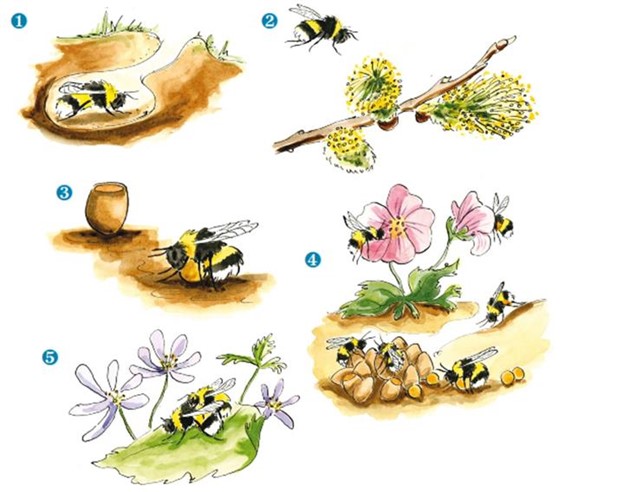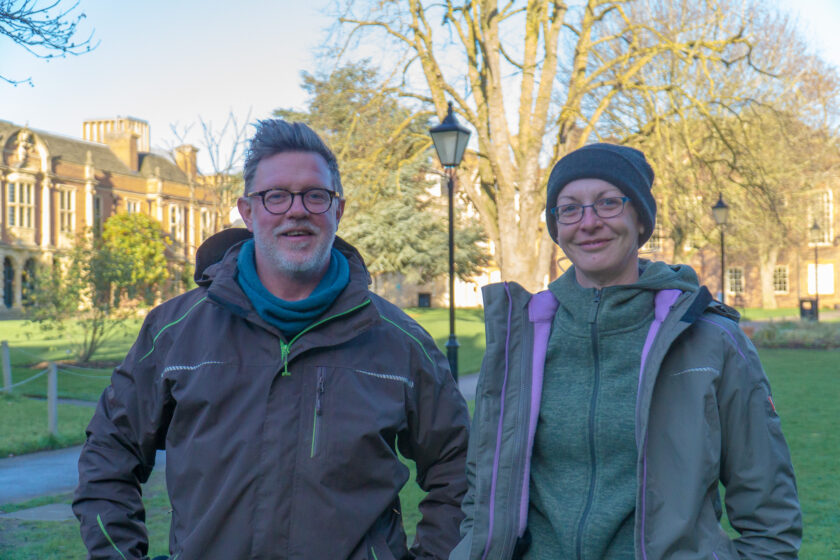In like a lion and out like a lamb! Well… let’s hope so, as this article is written in a month where the weather appears to be making drastic changes from one extreme to another.
Although some of the new planting looks as though, unfortunately, it hasn’t made it through the cold weather, we gardeners are an optimistic bunch and always leave things until we’re absolutely sure. Don’t be surprised if something you’ve seen in the garden and are sure is a ‘goner’ springs back later in the month with new vigor.
With the worst of the cold now behind us, the garden is positively springing into the new season with all the excitement of the planting done at the end of last year starting to come to fruition, and we can’t wait to see what happens. As well as the legions of tulips that are now starting to show their leaves in almost every border, we are also seeing the hyacinths coming through, not only in the meadow area and under the beech tree in main quad but also in the borders.
This month has also seen the installation of our first bee hotel (an arrangement of hollow wooden tubes that are perfect for nesting bees) in the wisteria by Holtby. This will be the first of many around the site and we will keep you updated on the new additions as well as if we have any occupants.
Speaking of bees, one thing we are incredibly excited about is the awakening of our Queen bumble bees, who are currently hibernating in the meadow area. They are due to rise from the ashes to start this summer’s colonies any time from the end of March to the beginning of April (you can read more about their life cycle below).
Things to see this month
Hyacinths – Meadow and under the Beech tree
Chaenomeles x superba ‘Crimson and Gold’ – Darbyshire
Corylopsis pauciflora (Buttercup Witch Hazel) – MTC
Some bees finding a new home in Somerville – perhaps in our bee hotel?
Lungwort flowers have emerged in the beds against the college wall behind Wolfson. The plant gets its name from its leaves, which were thought to resemble lungs leading to a mistaken belief the plant’s healing properties.
The beatiful red flowers of the flowering quince
The Flowering Quince makes a striking warm addition to Darbishire quad in March
The beautiful buttercup hazels outside the MTC are now in bloom
A newly awakened honeybee in March enjoying a snack from Somerville’s buttercup hazel
A favourite hibernating spot for Somerville’s queen bees
The meadow area is now dotted with hyacinths, joining the crocuses who are in the last weeks of their flowering for this year
Our new Bee Hotel outside the Library
A hibernating queen bee in our meadow area
| A Year In The Life Of A Bumblebee |
|---|
| Bumblebees live in nests of up to 400 individuals, ruled by a queen. Unlike honeybee hives, the colony lasts for just one year. After emerging from hibernation in the early spring, the queen will look to stuff her face with pollen and nectar to rebuild her strength, making it essential to plant spring flowers like daffodils in a bee-friendly garden. Once she finds a suitable nest site, she will remain there for the whole summer laying eggs. She mainly rears female workers, whose job it is to feed, nurture and build the colony, but towards the end of the summer she produces some male bees and new queens. After mating, the males, workers and old queens die off, leaving the new, fertilized queens to hibernate through the winter and start the process anew. |

(c) Bumblebee Conservation Trust

Somerville’s Head Gardener Alastair Mallick and Gardener Anna Hart